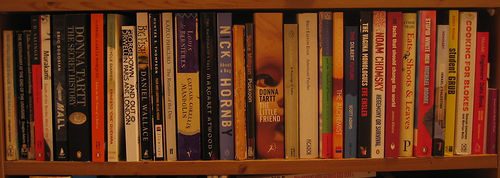Now Go Write: style in the sentence

To help YOU go write today, I’ll share my number 1, go-to method of getting my style muscles in condition.
There is something to be said for having a shock-proof shit detector that can be turned “off” for the purposes of drafting. That is, an editor you can shut up long enough to get the words on the page.
I’ve already hoorayed over the triumph of finishing a draft (just the first of many, mind you) of novel #3 and managing to crank out 200,000 words in a year with a focus on plot.·
But in all that FAST writing, I had a recurring fear that I was steadily killing my inner stylist. Was I losing the art of the well-turned sentence? Had I become deaf to the music of language in favor of the blunter instruments of plot twists, drama, and suspense? Would I ever write another paragraph that, even if it took me an hour, had all the harmony and cohesion that are missing in our world?
As a reward for finishing the draft and because, let’s face it, my style muscles have gotten a little weak, I’m taking a break from story and plot and returning to my first love: the sentence. Here’s a lovely demonstration of why it matters to take time with the sentence:
This sentence has five words. Here are five more words. Five-word sentences are fine. But several together become monotonous. Listen to what is happening. The writing is getting boring. The sound of it drones. It’s like a stuck record. The ear demands some variety. Now listen. I vary the sentence length, and I create music. Music. The writing sings. It has a pleasant rhythm, a lilt, a harmony. I use short sentences. And I use sentences of medium length. And sometimes, when I am certain the reader is rested, I will engage him with a sentence of considerable length, a sentence that burns with energy and builds with all the impetus of a crescendo, the roll of the drums, the crash of the cymbals–sounds that say listen to this, it is important.
(Gary Provost, 100 Ways to Improve Your Writing. Mentor, 1985)
There are countless books of writng prompts and exercises out there, but I always come back to my favorite approach: starting with sentences I admire in books I’m reading. Try it! Here’s how:
Find a paragraph of prose you admire. Write it out longhand just to get the feel of those amazing words coming out of your own pen (on loan). Notice the joints within and between sentences, how they fit together and flow.
Now write your own paragraph (on whatever subject you choose), modeling each sentence exactly on the paragraph you admire. Try to stick to your model; the idea is to pay attention to how writing moves at the sentence level—and to get infected by gorgeous prose. Here’s an example:
Gil Adamson’s opening sentence in her novel The Outlander: “It was night, and dogs came through the trees, unleashed and howling.”
Ashley’s sentence: It was noon, and salmon arced up out of the stream, rainbowed and gleaming.
What’s awesome about this prompt, which I shared with figment.com here? You can use it over and over, so it’s a perfect building block for a writing ritual. Best of all, you can surprise yourself into a twist in your narrative.




